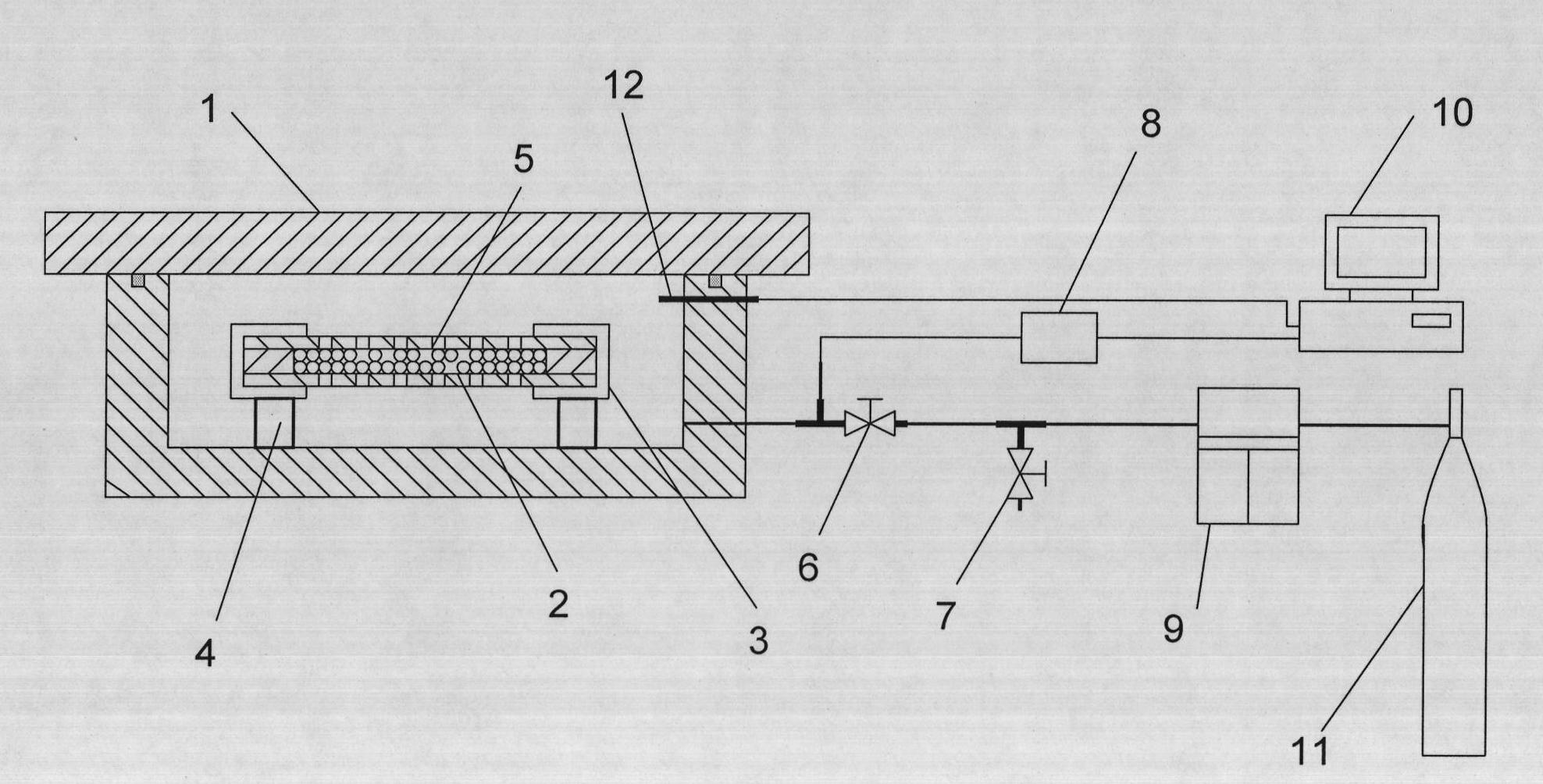Method for forming thermoplastic polyester elastomer closed pore micro-foaming product
A thermoplastic polyester and molding method technology, which is applied in the molding field of thermoplastic polyester elastomer closed-cell micro-foamed products, can solve the problem of uneven cell distribution of micro-foamed TPEE products and easy dispersion of microcapsule foaming agents , affecting the mechanical properties of materials and other issues, to achieve the effect of solving the difficulty of supercritical intermittent foam molding, saving raw materials, and good dimensional stability
- Summary
- Abstract
- Description
- Claims
- Application Information
AI Technical Summary
Problems solved by technology
Method used
Image
Examples
Embodiment 1~12
[0033] Such as figure 1 , the molding device of the thermoplastic polyester elastomer closed-cell micro-foamed product of the present invention consists of an autoclave 1, a flat vulcanizer for heating the autoclave 1, a molding die 2 located in the autoclave 1, and a gas source connected to the autoclave 1 and data acquisition system. One end of the autoclave 1 is provided with an air inlet, and the air inlet is connected with a high-pressure ball valve 6 and a pressure sensor 8 for controlling gas in and out. The high-pressure ball valve 6 is connected with the gas cylinder 11 through the gas booster pump 9, and the gas cylinder 11 is used as the gas source. There is an emptying valve 7 between the high-pressure ball valve 6 and the gas boosting pump 9, and the emptying valve 7 It is a high-pressure needle valve for displacing air, regulating pressure and quickly releasing pressure. The data acquisition system 10 is connected with the thermocouple 12 and the pressure senso...
PUM
| Property | Measurement | Unit |
|---|---|---|
| pore size | aaaaa | aaaaa |
| pore size | aaaaa | aaaaa |
Abstract
Description
Claims
Application Information
 Login to View More
Login to View More - R&D
- Intellectual Property
- Life Sciences
- Materials
- Tech Scout
- Unparalleled Data Quality
- Higher Quality Content
- 60% Fewer Hallucinations
Browse by: Latest US Patents, China's latest patents, Technical Efficacy Thesaurus, Application Domain, Technology Topic, Popular Technical Reports.
© 2025 PatSnap. All rights reserved.Legal|Privacy policy|Modern Slavery Act Transparency Statement|Sitemap|About US| Contact US: help@patsnap.com



